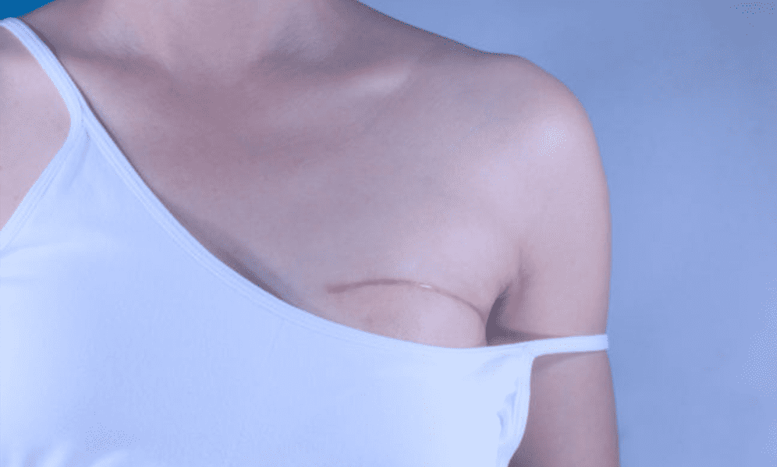In the unfortunate event if you have undergone mastectomy because of breast cancer or other pathologies, you can choose reconstructive plastic surgery. With the help of breast reconstruction, symmetry between the two breasts can be achieved as it involves replacing the removed nipple, breast tissue and skin. The extent of the reconstructive technique depends on the amount of breast tissue removed, and the width, size and location of the tumor removed.

Am I an eligible candidate for breast reconstruction?
It involves a little bit of emotional quotient because of the long-term prospects of living without a breast or a part of it. Suffice to say, it affects every woman differently. The choice here is subjective and understandably more often than not arriving at a decision is the difficult part of the process than the procedure. However, improvements in the plastic surgery techniques mean better results now than ever before. Breast reconstruction can be done using either breast implants or your own tissue or combined procedure. Apart from changing your appearance dramatically, breast reconstruction has some psychological benefits as well. It can contribute to a sense of wellness to you and your family.
Is breast reconstruction cosmetic or plastic?
As breast reconstruction is intended to correct a dysfunctional area of the body, it is not purely a cosmetic surgery.
When do I have breast reconstruction?
A lot of factors come into play in deciding the timing of the surgery such as cancer treatment, health condition of the patient and above all one’s desire to undergo the procedure. You can have the reconstruction surgery during the same operation of removing the breast or as a separate operation after a mastectomy.
Types of breast reconstruction:
Different types of breast reconstructive options are available. Your health care team can apprise you of the different techniques that may be right for you. However, it is in your best interest to do your own research too. If you know someone who had undergone breast reconstruction, you can have a word with her about the decision process and her overall satisfaction post procedure. Getting first-hand information can allay a lot of your doubts about the procedure and make the decision-making process less cumbersome.
Generally, there are two main types of reconstructive procedures viz. implant reconstruction and autologous reconstruction (commonly known as “flap” reconstruction”). As the name indicates, implant reconstruction involves inserting an implant. Implants are usually filled with saline water, silicone gel or a combination of the two, whereas for autologous reconstruction tissue is transplanted from another part of the body, which could be your belly, back or thigh. There could be an implant even in autologous reconstruction. Both the techniques have pros and cons. An implant reconstruction can be seemingly an easier surgery – surgery gets over fast, speedy recovery post procedure and easy to comprehend, whereas flap reconstructions are time-consuming and the recovery period is elongated. However, on the flip side, over a period of time implants can be problematic and may require additional procedures to rectify the defects that may occur in due course and sometimes there isn’t enough tissue cover for an implant ruling out option of implant surgery. Flaps are comparatively better over time. A well-done flap reconstruction rarely requires any additional procedure over the course of a lifetime. So the choice is highly subjective, keeping in mind what fits a person and her individual situation.
Time taken for a breast reconstruction:
Duration . Post surgery, before being discharged to the hospital room, you may be observed in the postoperative ward about two to three hours.
Recovery from the procedure:
Experiencing some discomfort in the initial few days post procedure is quite natural. You will be put on a pain medication as needed. You will be under strict medical observation during your stay in the hospital. Doctors may encourage you to move your arms soon after the procedure, but not for any activity that involves exerting yourself. The next day after the procedure you may be able to sit in a chair beside the bed. Patients are able to walk on the second day. An intravenous line may be placed for a day or two. There may be drains at the incision site to drain any blood or any excess fluid buildup.
The duration of the hospital stay depends on the type of the procedure and the rate at which you are recovering. For implants, an average hospital stay is one to two days, whereas for flap procedures a stay of five to six days are generally required.
Follow-up care:
You can expect some swelling and bruising at the operative site for two to three weeks. You may be given medications to apply to the suture area and may be instructed to change bandages. Your surgeon will advise you about bathing and wound care. Most women can return to activities of daily living within in six to eight weeks post surgery. However, make sure you don’t do any strenuous exercise and consult your doctor before undertaking anything of that ilk.
For Enquiries and Online Appointments
For more detailed information about Breast Reconstruction, please send us a message today.

